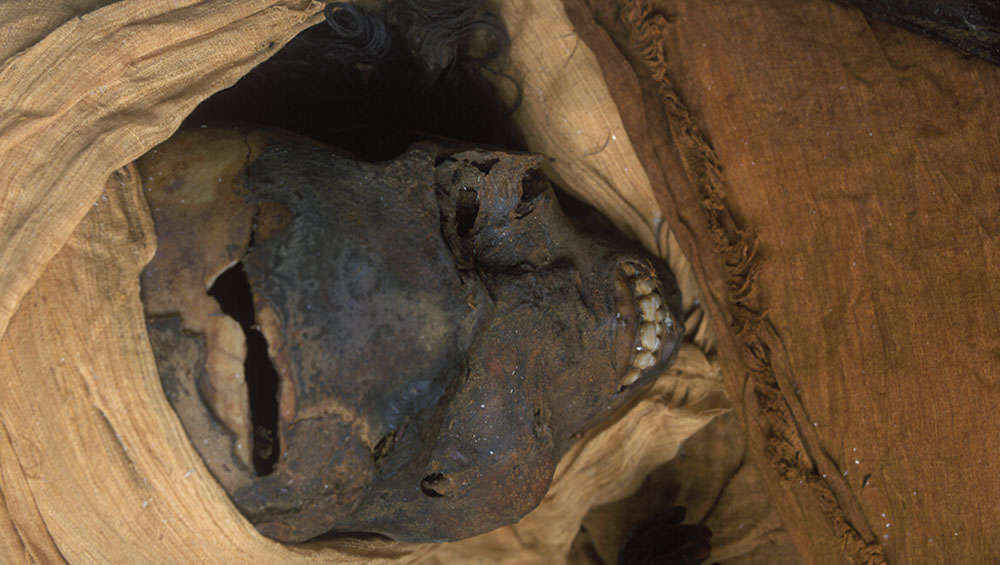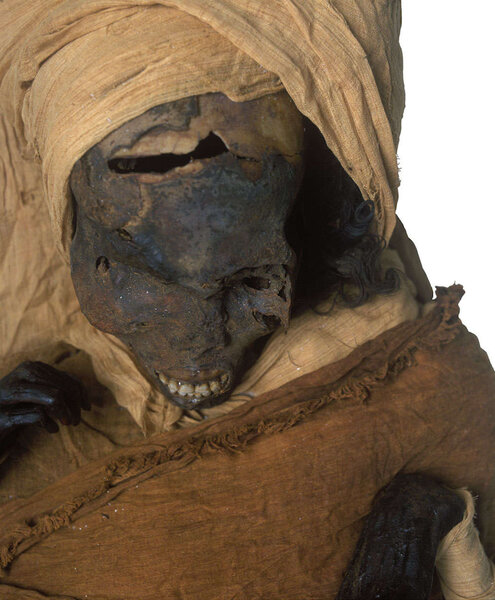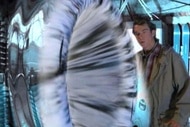Create a free profile to get unlimited access to exclusive videos, sweepstakes, and more!
Mummy reveals how Egyptian pharaoh was brutally killed in ancient war caused by snoring hippos

Not all kings sat on their horses in the back of the battlefield as they watched their men die on the front lines — at least not this one.
Pharaoh Seqenenre Taa II “The Brave” literally gave his life for Egypt when the enemy Hyksos ruled the upper part of the kingdom and still demanded those in the lower part to bow down to them. Fragments of ancient papyrus tell of a battle that began when the ruler of the Hyksos, Apophis, complained that the hippos in a sacred pool were snoring too loud for him to fall asleep. The hippopotamus was both a feared and revered animal in ancient Egypt. When Seqenenre heard that Apophis wanted the pool destroyed (a grave insult to the pharaoh), it brought on bloodshed.
Radiologist Sahar Saleem, who specializes in paleoradiology, co-led a study with Egyptologist and former Egyptian Minister of Antiquities Zahi Hawass, which was recently published in Frontiers in Medicine. She examined the mummy by using non-invasive CT scans that revealed new evidence of how he fell defending his people against the Hyksos. His death was grim.
“I compared the injuries with five Hyksos weapons that included a spear, axe, and three daggers of different shapes,” Saleem told SYFY WIRE. “The size and shape of the fractures correlated well with the Hyksos weapons. Analysis of the morphology of the injuries enabled a better understanding of the mechanism of trauma, possible number of the attackers, and their relative position to the King. Any one of the head injuries could have been fatal, but the combination was definitely fatal.”
Apophis clearly had it out for Seqenenre. Whether he had other motives (besides the dominion of Egypt) remains unknown, but the snoring hippos sent him into a rage. He was captured in battle by Hyksos soldiers who then brutally proceeded to execute him with whatever weapons they had. Whoever slashed his upper forehead with a sword or axe could have killed him, though he could have also died from a wound at the base of the skull which was dangerously near the brain stem. It didn’t stop there. The Hyksos went into overkill mode, as can be seen by additional wounds on the nose, right cheekbone, and right eye.
When the mummy of Seqenenre Taa was first unwrapped and identified in 1886, the smell of putrefaction had also survived with it for centuries, leading some archeologists to believe that the fallen pharaoh was hastily mummified at the edge of the battlefield. There was also speculation about whether he was dealt the fatal blow in his sleep. The desiccated brain that had even been left in the skull (when the brain was normally removed) suggests that the body of Seqenenre was carried away on its side. It most likely that it had already begun to decompose as it was rushed from battle to be properly prepared for the afterlife.
“The embalmers skillfully hid some injuries using layers of embalming material; this technique resembles a sort of plastic surgery,” Saleem said. “This indicates that the mummification process did not take place in a remote non-equipped place, but rather were carried by professional embalmers at the royal mummification workshop. Based on the CT appearance, we suspect that resin and linen were used to cover the injuries.”
The pharaoh being mummified in an embalming studio is the only way to explain how parts of his face were meticulously reconstructed. Mummification was an art, and those who had worked on Seqenenre had been skillful enough for their reconstructive work to go unnoticed for so long. His severe head trauma suggests that his assailants were obviously thirsty for blood. However, the Hyksos may have had another motive for bashing him in the face — to disgrace the ruler who dared oppose their king.
Disfiguration of the face would happen in Ancient Egypt when the dead had enemies who wanted revenge beyond the grave. Whether or not they could reach the actual mummy, vandals would disfigure statues with face of the deceased to scratch it out in any murals or other artwork that decorated the tomb. Most of Pharaoh Akhenaten’s subjects were against his strange monotheistic religion of sun worship that he imposed on them, which can explain some now-faceless statues. Queen Hatshepsut’s jealous stepson Thutmose III and grand-stepson Amenhotep II tried to erase her image from everything they could.
Seqenenre was not just taken down in battle. He was probably executed, as Saleem found out while examining his extremely fragile mummy, whose hands had been bound before mummification. She believes that what happened went far past the execution of a bound prisoner with just one weapon.
“Multiple assailants seem to have contributed to the king's death in a ceremonial execution,” she said. “As the body of Seqenenre was mummified, we assume that the Egyptians soldiers were able to defeat the Hyksos and bring back the King's body to be mummified likely in the royal workshop in Thebes. We based this scenario on the available scientific data, including Hyksos weapons and the mummy, but it still remains a scenario.”
Though Seqenenre Taa II did not live to see the Hyksos driven out, his courage inspired his successors to keep fighting. The Eighteenth Dynasty dawned on a re-unified Egypt and his son Ahmose I as pharaoh. As for what happened to the hippos, nobody knows.



























